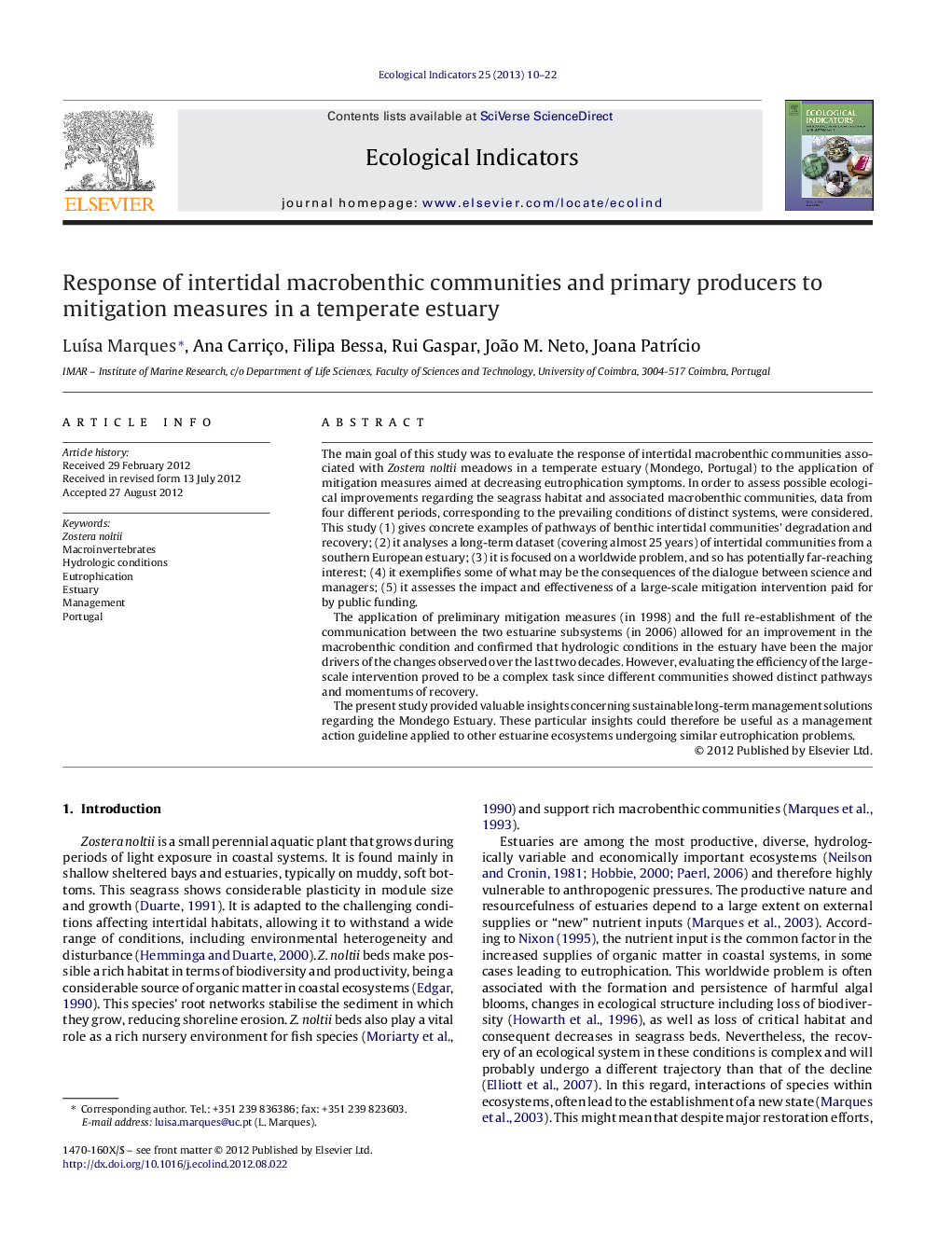| Article ID | Journal | Published Year | Pages | File Type |
|---|---|---|---|---|
| 4373581 | Ecological Indicators | 2013 | 13 Pages |
The main goal of this study was to evaluate the response of intertidal macrobenthic communities associated with Zostera noltii meadows in a temperate estuary (Mondego, Portugal) to the application of mitigation measures aimed at decreasing eutrophication symptoms. In order to assess possible ecological improvements regarding the seagrass habitat and associated macrobenthic communities, data from four different periods, corresponding to the prevailing conditions of distinct systems, were considered. This study (1) gives concrete examples of pathways of benthic intertidal communities’ degradation and recovery; (2) it analyses a long-term dataset (covering almost 25 years) of intertidal communities from a southern European estuary; (3) it is focused on a worldwide problem, and so has potentially far-reaching interest; (4) it exemplifies some of what may be the consequences of the dialogue between science and managers; (5) it assesses the impact and effectiveness of a large-scale mitigation intervention paid for by public funding.The application of preliminary mitigation measures (in 1998) and the full re-establishment of the communication between the two estuarine subsystems (in 2006) allowed for an improvement in the macrobenthic condition and confirmed that hydrologic conditions in the estuary have been the major drivers of the changes observed over the last two decades. However, evaluating the efficiency of the large-scale intervention proved to be a complex task since different communities showed distinct pathways and momentums of recovery.The present study provided valuable insights concerning sustainable long-term management solutions regarding the Mondego Estuary. These particular insights could therefore be useful as a management action guideline applied to other estuarine ecosystems undergoing similar eutrophication problems.
Graphical abstractFigure optionsDownload full-size imageDownload as PowerPoint slideHighlights► Zostera noltii and associated macrofauna changed after heavy hydrological modifications. ► Mitigation actions had positive effects on seagrass and intertidal macrobenthic assemblages. ► Macroalgae biomass showed a significant negative correlation with salinity in all periods. ► Different communities seem to have distinct pathways and momentums of recovery. ► Hydrologic conditions constitute a major switch driver.
